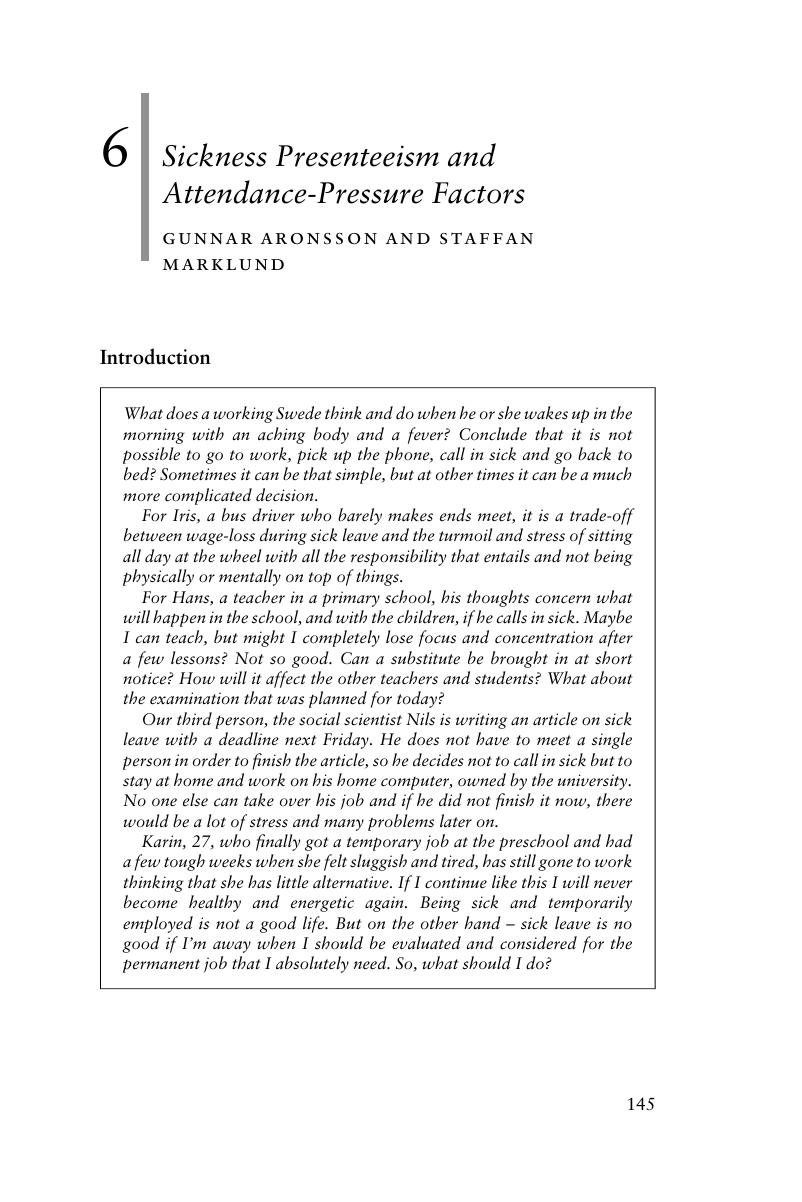Book contents
- Presenteeism at Work
- Cambridge Companions to Management
- Presenteeism at Work
- Copyright page
- Contents
- Contributors
- Foreword
- Introduction
- Part I Situating Presenteeism on the Global Stage
- Part II Understanding the Behavior of Presenteeism
- 4 Motivation and Presenteeism: The Whys and Whats
- 5 The Dynamic of Assiduity at Work: Presenteeism and Absenteeism
- 6 Sickness Presenteeism and Attendance-Pressure Factors
- 7 Presenteeism in Economic Research*
- Part III Understanding the Consequences of Presenteeism
- Part IV Understanding Presenteeism in a Cross-Cultural Context
- Index
- References
6 - Sickness Presenteeism and Attendance-Pressure Factors
from Part II - Understanding the Behavior of Presenteeism
Published online by Cambridge University Press: 09 August 2018
- Presenteeism at Work
- Cambridge Companions to Management
- Presenteeism at Work
- Copyright page
- Contents
- Contributors
- Foreword
- Introduction
- Part I Situating Presenteeism on the Global Stage
- Part II Understanding the Behavior of Presenteeism
- 4 Motivation and Presenteeism: The Whys and Whats
- 5 The Dynamic of Assiduity at Work: Presenteeism and Absenteeism
- 6 Sickness Presenteeism and Attendance-Pressure Factors
- 7 Presenteeism in Economic Research*
- Part III Understanding the Consequences of Presenteeism
- Part IV Understanding Presenteeism in a Cross-Cultural Context
- Index
- References
Summary

- Type
- Chapter
- Information
- Presenteeism at Work , pp. 145 - 165Publisher: Cambridge University PressPrint publication year: 2018
References
- 5
- Cited by

